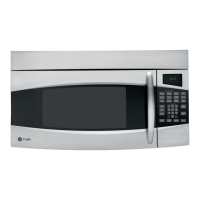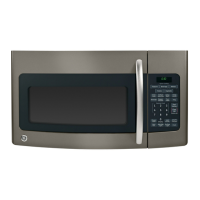containersandcovers
Appropriatecontainersandcoveringshelp assure
good cookingresults.
~Mways use microwave-safecontainersand cover
them with lids or vented plastic wrap. Wonderif
it’smicrowave-safe? Put it to the test described in
the Microwaving Tips section.
gNever use tight-sealingplastic covers—they can
prevent steam from escaping and cause food to
overcook.
~Match the amountof food to the sizeof the
container.Fill containersat least half full for
best results.
oBe sure the outsideof the cookingcontainerand
the inside of the microwaveoven are dry before
placing food in the oven. Beads of moistureturning
into steam can misleadthe sensor.
eStir or rotatesome foods after a beepingsignal, if
required.See Automatic Cooking ControlGuide.
Use microwave-safe casseroles or
bowls for entrees and vegetables.
Cover with lids that fit. lf lids are
not available, use plastic wrap or
wax paper. Plastic wrap should be
\/ented over fOOdto allow for
escaping steam. Seal by pressing
plastic wrap f’irmlyaround edges.
For frozen foods in metal trays,
remove foil coveringand baked
goods, reinsert tray into box and
close ends of box.
Slit plastic pouches 1inch as
shown above. Break food up
thoroughly after oven signals.
Use oblong or square containers
for chicken or
COI-IIm the cob.
Plastic wrap covering should lx
~Jcllted Ovc[. ~~od to
allowfor
escaping
steam.Sealby p-cssiw
plastic wrap firmly around edges.
Paperplates--while they may be
used for Timeand Temperature
CookingandDefrosting,do not use
them with automatic cooking. Use
microwave-safeplatesorbowlsfor
reheating.Cover with plasticwrap
or wax paper.
FollowAutomaticCookingControl
Guide setting,for casseroles.Cover
casseroletneat and vegetables
with sauce,Cool hot ingredients
or sauces. If they ~arenot cool, it is
betterto use Time Cook I & H.
t;, 7-’,
I
. .——.
. .-.-....—.-
I
—————....—. . . . .
!
—...—
-—.....—-------
—-...,—..-
.”——. .—--.. .——— -----
.—. —-.

